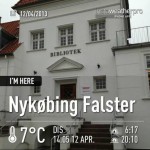DISCOVER:
What is Twitter?
Twitter is a real-time information network sharing short messages called “tweets” that are just 140 characters long. Twitter is a social network which allows people to choose which accounts they will follow and what information they wish to share with the people that follow them. This video from Commoncraft is a great overview of how Twitter works. A lot of organisations, including libraries, also use Twitter. Some examples include: @britishlibrary, @librarycongress, @nlnz and @PublicLibrarySG .
A lot of individuals also use Twitter, including astronauts, celebrities (eg. @wilw, @algore), authors (@maureenjohnson, @anitaheiss), sports people, royalty and parody accounts. There are also verified accounts as it is easy to imitate a person on Twitter (see the many accounts posing as Aung San Suu Kyi for example). If you’re still not convinced that Twitter is for you, Ned Potter addresses some of the concerns people may have about Twitter in “7 reasons people don’t use twitter, and why ‘It’s a conversation’ is the answer to all of them“
What is a hashtag and how does it work?
One of the features of Twitter is the use of hashtags. They act as hyperlinks connecting conversations. The use of hashtags to link conversations together has also carried over into other social networking tools like Instagram, Google+, Pinterest and Tumblr. Hashtags are particularly useful for regular conversations #kidlit, natural disasters #eqnz, sporting events and teams #cricket, events #ifla #tedx and conferences #sxsw.
What is Twitter etiquette?
Just like any community, there are accepted ways of communicating and behaving. Here is a guide to Twitter etiquette.
How are libraries using Twitter for online engagement?
How can library workers use it for professional development?
- following conferences and seminars eg. #cyc4lib
- building a personal learning network (PLN) of colleagues who share your professional interests (a new graduate librarian, Alisa Howlett, explored this idea in more detail)
- keeping up with trends and industry news #npsig #mtogo
- sharing links to research and reports (eg Pew Internet)
EXPLORE:
- Set up your Twitter account (see the tips from Twitter)
- You can use Twitter in the web browser, but it will be much easier to use an app
- Explore the App Store or Google Play to find and install an app
- Send a tweet: Using the #23mobilethings hashtag tweet the name of your favourite museum or library
- Register your account for the course – if you would like us to add you to the list of people working on #23mobilethings please tweet a message to @23mobilethings
- Using Twitter lists (you must be logged in to see lists) eg Public Libraries in NSW
- See what is trending on Twitter around the world
- Storify to collect Tweets and links
- There are more useful Twitter links on our Pinterest Board.
THINKING POINTS:

